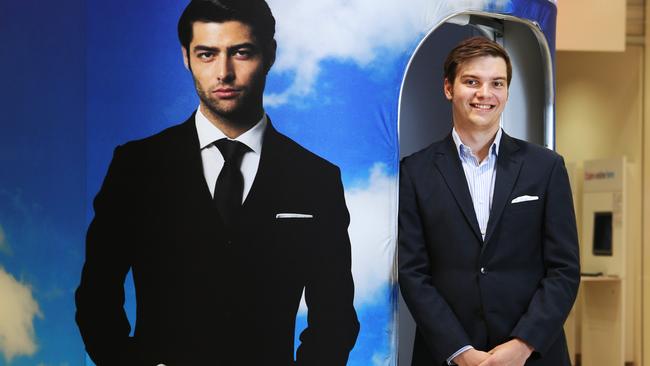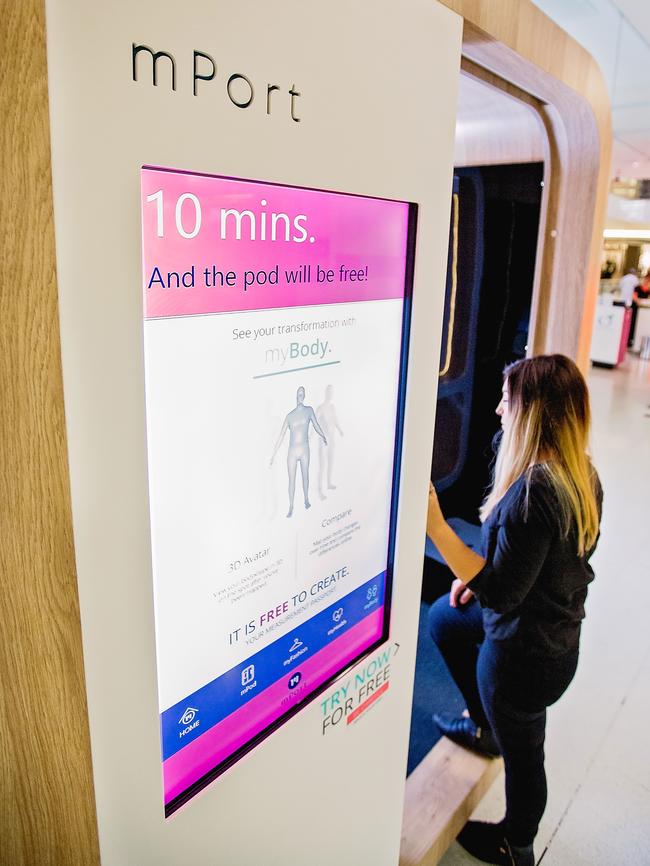3D body scan a one-stop clothes shop
You can now have your clothing measurements taken by a 3D scanner in Westfield centres. Next: instant clothes.

It’s a Saturday afternoon in 2020 and you’re gearing for a big night out but panicking about what to wear. Nothing in the wardrobe is suitable, so you head to your local shopping plaza and scurry into a 3-D scanning booth.
Moments later, the screen displays your body’s clothing measurements — known in 2020 as body metadata. The booth invites you to punch in your preferred fabric, colours and patterns. You stand outside and wait.
Several minutes later, your new shirt or blouse, made to the right size with the chosen pattern and material, drops down a chute. You’re on your way.
Fiction? No. That’s because the two major technological planks of this scenario are with us now. The first is 3-D body scanning.
It’s being rolled out to a shopping centre near you, albeit with 2015 applications. MPort, maker of mPod, says its booths are available at Westfield shopping centres at Miranda (NSW), Bondi Junction (NSW), Doncaster (Victoria), Marion (South Australia), Garden City (Queensland) and Belconnen (ACT).
They’re also at Stockland in Sydney and Shellharbour (NSW). Westfield Sydney CBD will have an mPod by the end of next month, and every Westfield in Australia will have one by March next year, the company says.
So scanning booths will be ubiquitous. Of course, in 2015 the aims of mPod scanning booths are different. Three tailors — Ganton, Institchu and SuitMeUp — use your scanned body metadata to make you beautiful suits and other clothing.

There are other uses. MPort says the booths will benefit bricks-and-mortar retailers and have a health and fitness aspect. People can go there to measure their body shape and see how it changes across time.
But what about the other jigsaw piece, creating made-to-measure clothing from a 3-D design? There’s a new fabric-based 3-D printer called Electroloom that could step up to the plate.
Electroloom creates seamless ready-to-wear garments based on 3-D patterns, the kind of output a scanning booth could produce. Its developer says Electroloom is ready for alpha testing by early adopters.
There’s no sewing and no stitching. The printer converts a customised polyester-cotton blend into solid fibre, which is deposited into a 3-D mould using an electric field. This creates the fabric as it builds the clothing item line by line.
At this stage it prints simple tank tops, skirts, children’s dresses and beanies rather than premium Italian suits. It has the ability to make curtains, scarfs and lampshade lining.
The Electroloom printer project began 18 months ago and recently sought funding through Kickstarter.com. It is already more than halfway to its goal of $50,000 with four weeks to go.
With both scanning booths and 3-D fabric printers achievable, I think my Saturday clothing scenario is a goer, although there’s much to be done.
Building a scanner that talks to this particular printer is one task; getting the printer to build more complex garments and desirable fashion items beyond tank tops is another. But in another five years — 2020 — who knows?


